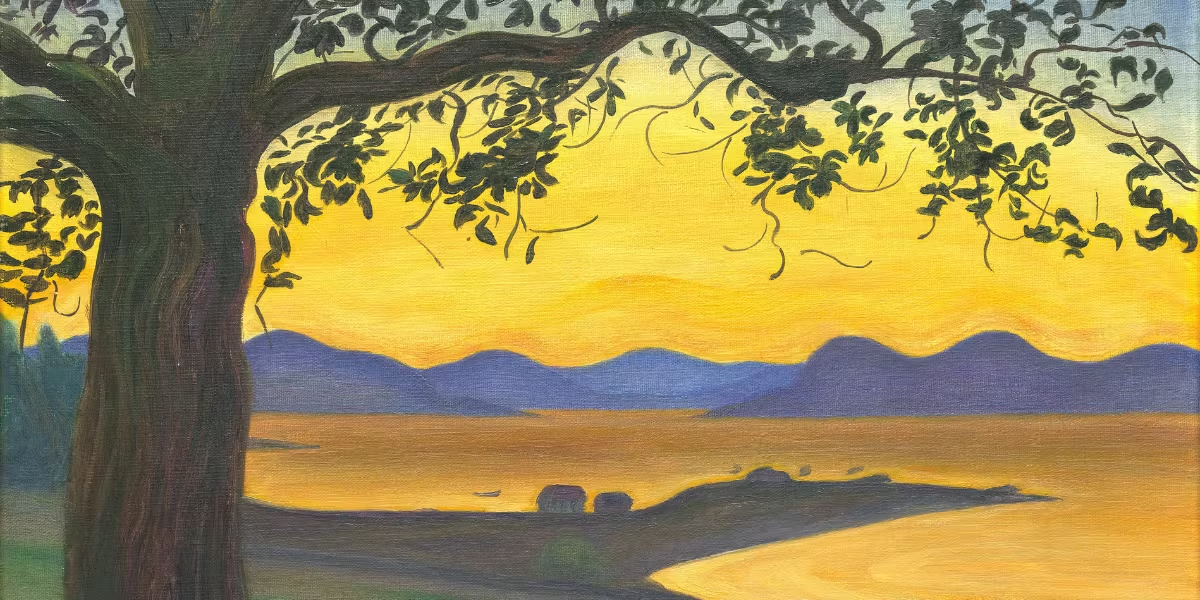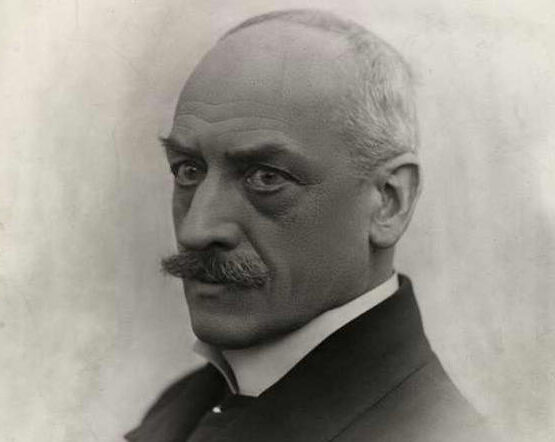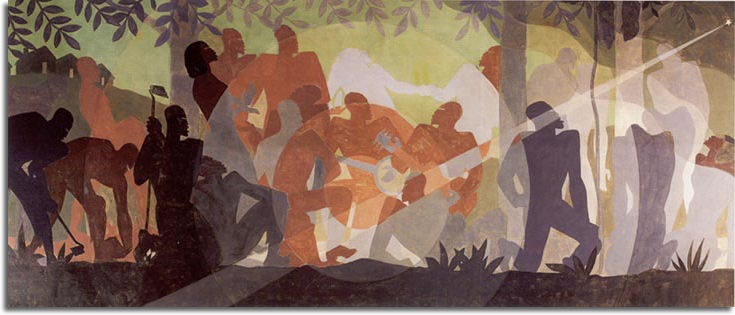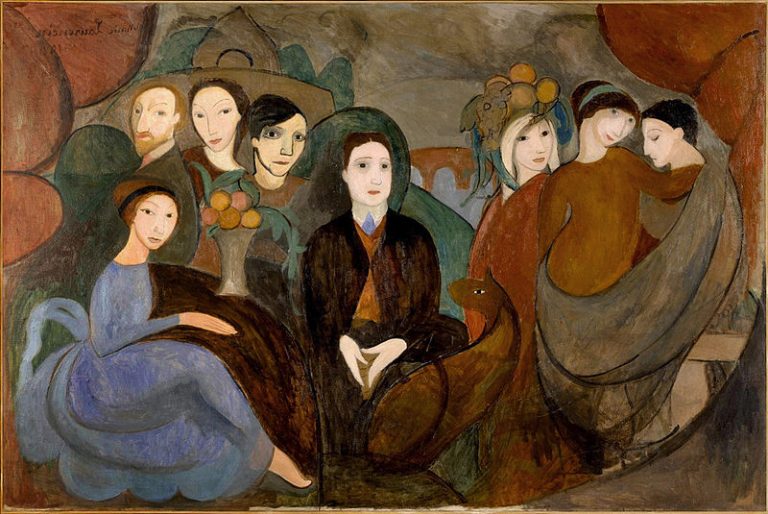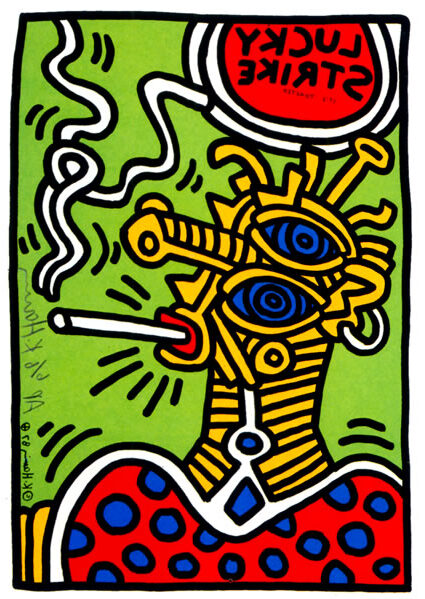Harald Sohlberg, Painter: A Pioneer of Norwegian Landscape Art
Born: September 29, 1869, Norway
Death: June 19, 1935, Norway
Art Movement: Neo-Romanticism
Nationalité : Norvégien
Teachers: Johan Nordhagen, Erik Werenskiold, Eilif Peterssen, and Harriet Backer
Institution: Royal School of Art and Design of Christiania and Art School of Kristian Zahrtmann
Harald Sohlberg, Painter: A Pioneer of Norwegian Landscape Art
Life and Career of Harald Sohlberg
Harald Oskar Sohlberg (1869-1935) emerged as one of Norway’s most distinctive painters during the late 19th and early 20th centuries. His unique vision of Norwegian landscapes earned him recognition alongside contemporaries like Edvard Munch.
Petite enfance et inspiration
Born in Oslo on September 29, 1869, Sohlberg initially trained as a decorative painter. He studied at various art schools in Oslo before traveling to Paris in the 1890s, where he was exposed to new artistic movements.

Flower Meadow in the North, 1905 by Harald Sohlberg
Unlike many artists of his time, Sohlberg preferred solitude and often sought inspiration in Norway’s remote landscapes. The mountains of Rondane and the mining town of Røros became recurring subjects in his work.
His early paintings showed influences from both traditional Norwegian folk art and international movements. Sohlberg developed a distinct style characterized by vibrant colors and precise details that captured the mystical quality of Norwegian nature.
Neo-Romantic Influence and Contemporaries
Sohlberg’s work is firmly rooted in Neo-Romanticism, a movement that emphasized emotional response to nature. While often compared to Edvard Munch, Sohlberg crafted his own unique artistic voice.
Unlike Munch’s exploration of psychological turmoil, Sohlberg focused on creating serene yet mysterious landscapes. His work shows some influence from Paul Gauguin’s use of color, though applied to distinctly Norwegian scenes.
Sohlberg’s contemporaries included Nikolai Astrup, another significant Norwegian landscape painter. Together, they helped establish a uniquely Norwegian artistic identity while connecting to broader European movements.
His meticulous attention to detail and use of intense blues and purples created an otherworldly quality in his landscapes that distinguished him from other artists of his era.
Pivotal Exhibits and Recognition
Sohlberg’s breakthrough came at the Oslo State Exhibition (Høstutstillingen) in the early 1900s, where his distinctive landscape paintings garnered critical acclaim. His work “Winter Night in the Mountains” (1914) became his most celebrated painting.
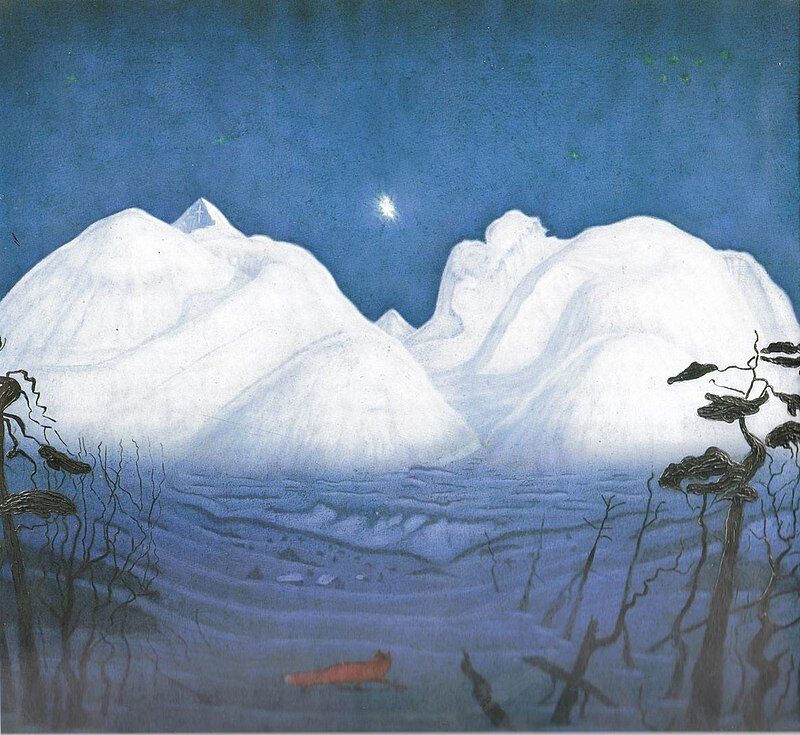
Vinternatt i Fellene III (Winter’s Night in the Mountains III), 1950
Art collector Olaf Schou played a significant role in Sohlberg’s career by purchasing several of his works and helping to establish his reputation. This support allowed Sohlberg to focus on developing his artistic vision.
Despite international exhibitions in Paris and Berlin, Sohlberg remained somewhat overlooked outside Norway during his lifetime. It wasn’t until decades after his death in 1935 that his contributions to Nordic art gained broader international recognition.
Today, Sohlberg’s paintings are considered national treasures in Norway, with major works displayed prominently in the National Museum in Oslo.
Artistic Works and Legacy
Harald Sohlberg created distinctive paintings that captured Norway’s stunning landscapes while infusing them with mystical qualities. His work established him as a leading figure in Norwegian neo-romantic and symbolist art traditions.
Signature Pieces
“Winter Night in the Mountains” (1914) stands as Sohlberg’s most celebrated work. This haunting nighttime scene depicts the Rondane mountain range bathed in moonlight, with its blue-tinted peaks rising majestically against a star-filled sky. The painting took him fourteen years to complete through multiple versions.
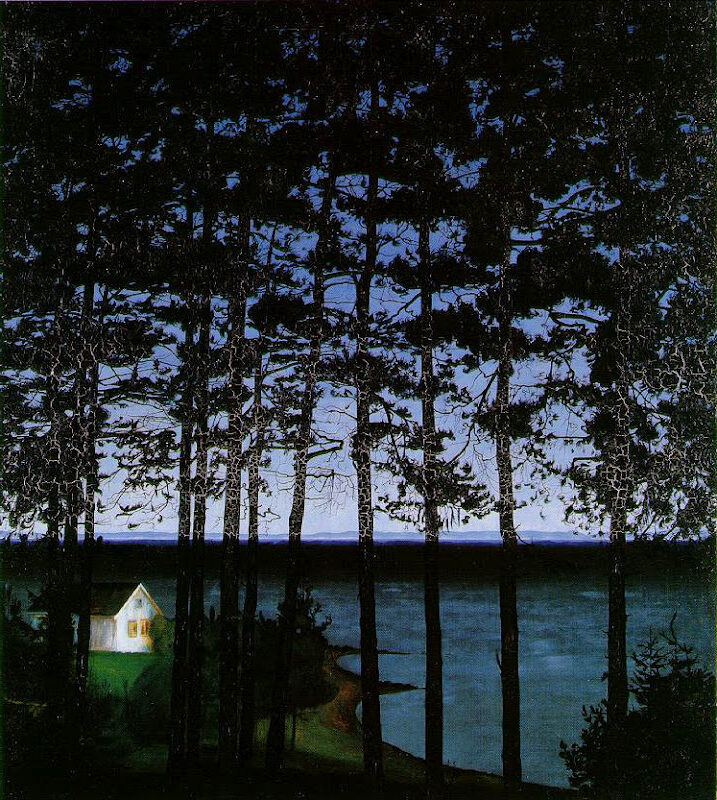
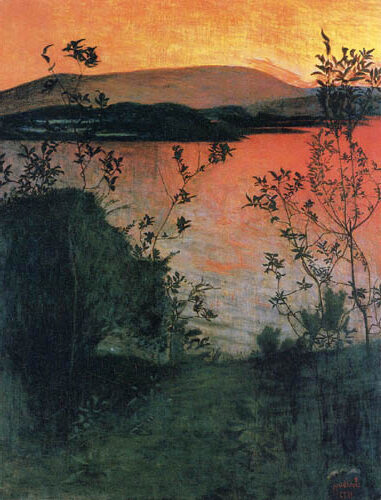
“Fisherman’s Cottage” (1906) showcases his ability to transform ordinary buildings into something magical through careful attention to light and atmosphere. The small structure appears to glow against its natural surroundings.
Another important work, “Flower Meadow in the North” (1905), demonstrates his fascination with Norway’s brief but vibrant summer seasons. In this painting, wildflowers blanket a hillside in vibrant detail, creating a striking contrast with distant mountains.
Thematic Exploration and Style
Sohlberg’s art reflects a deep connection to nature paired with symbolic elements. His landscapes often appear transfigured rather than simply depicted. He achieves this through:
- Heightened colors that intensify emotional impact
- Precise, almost architectural compositional structures
- Elimination of unnecessary details
- A sense of stillness and solitude
His painting “Natt” (Night) exemplifies his ability to create dreamlike atmospheres through carefully controlled color palettes. Unlike the Impressionists, Sohlberg preferred crisp outlines and deliberate composition over spontaneous brushwork.
His work bridges realism and spiritual contemplation. Mountains, forests, and lakes in his paintings feel both physically present and otherworldly. This duality gives his art its distinctive power.
Influence on Norwegian Art
Sohlberg helped define a uniquely Norwegian artistic identity during a critical period of national cultural development. He participated in key exhibitions that showcased Norwegian art to international audiences.
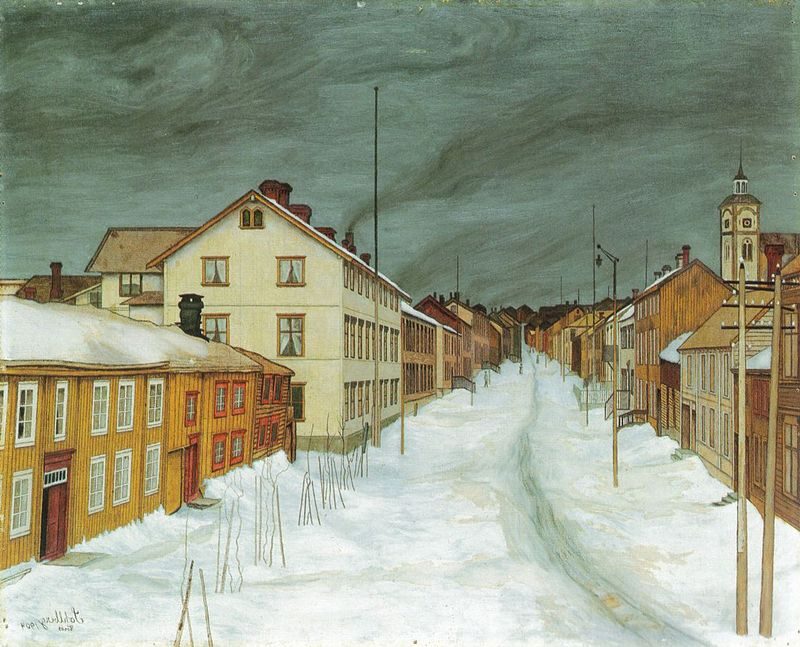
Storgaten Røros (Røros main street) from 1903
His influence extends through multiple generations of Nordic landscape painters. Even contemporary artists acknowledge his impact on how Norwegian nature is portrayed in visual art.
Unlike some peers who eventually adopted more modern styles, Sohlberg maintained his distinctive approach throughout his career. This consistency created a recognizable body of work that art historians can easily identify.
Museums throughout Scandinavia prominently feature his paintings. The Nasjonalmuseet in Oslo holds the largest collection of his works, helping to preserve his artistic legacy for future generations.
Exhibitions and Collections Worldwide
Harald Sohlberg’s paintings have traveled far beyond Norway’s borders, showcasing his unique vision of Nordic landscapes to audiences worldwide. His works are valued for their distinctive color palette and mystical atmospheres, particularly his famous winter scenes.
Domestic Exhibitions and Sales
The National Museum in Oslo holds the largest collection of Sohlberg’s works, including his masterpiece “Winter Night in the Mountains” (1914), depicting the Rondane mountain range. This painting has become an iconic image in Norwegian art history. The museum regularly features Sohlberg in exhibitions celebrating Norway’s artistic heritage.
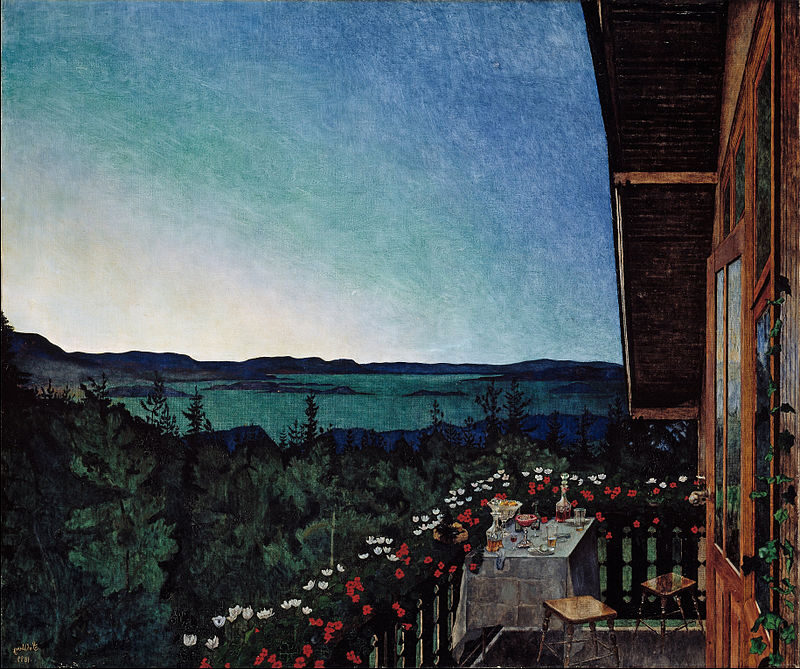
Summer Night, 1899 by Harald Sohlberg
In Røros, the mining town that inspired many of Sohlberg’s winter landscapes, local museums display his works alongside historical artifacts. His paintings of this UNESCO World Heritage site capture its unique architecture and stark winter beauty.
Norwegian galleries frequently host Sohlberg exhibitions, with his original paintings commanding high prices at domestic auctions. As both a painter and graphic artist, his prints are also collected throughout Scandinavia.
International Presence and Accolades
Sohlberg’s international recognition has grown steadily, with major exhibitions in London at the Dulwich Picture Gallery in 2019. This showcase, titled “Harald Sohlberg: Painting Norway,” introduced his mystical landscapes to British audiences.
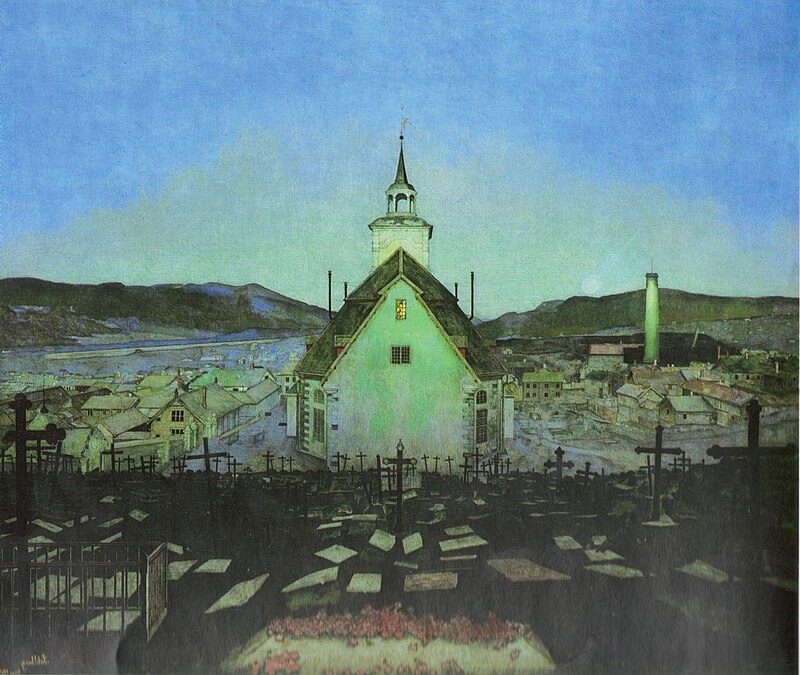
Natt (Night) from 1904 by Harald Sohlberg
American collections also feature Sohlberg’s work, with pieces appearing in Chicago’s art institutions. Art critics praise his unique approach to peinture de paysage, which blends naturalistic observation with symbolic elements.
International exhibitions often pair Sohlberg with other Symbolist painters, highlighting his contribution to this artistic movement. His unique vision of Norway’s landscapes resonates with global audiences despite their specificity to Norwegian settings.
Collectors worldwide seek Sohlberg’s limited graphic works, which demonstrate his technical skill beyond painting.
Questions fréquemment posées
Harald Sohlberg’s art continues to intrigue art lovers and scholars alike. His unique vision of Norwegian landscapes and his technical approach raise many questions about his work, influence, and legacy.
What are the defining characteristics of Harald Sohlberg’s painting style?
Sohlberg’s painting style combines elements of Symbolism with a distinctive personal approach to landscape. He used vibrant colors, especially blues, to create mystical atmospheres in his scenes.
His work features meticulous attention to detail while maintaining a dream-like quality. Sohlberg often depicted Norway’s mountains, forests, and small towns with precise brushwork.
Unlike the impressionists, he didn’t seek to capture fleeting moments but instead created carefully composed scenes that evoke emotional responses. His paintings frequently feature solitude and stillness, with an absence of human figures.
How has Harald Sohlberg contributed to Norwegian cultural heritage through his artwork?
Sohlberg captured the essence of Norway’s beauté naturelle in a way that helped define the country’s visual identity. His paintings of mountains and forests have become iconic representations of the Norwegian landscape.
During a time of growing national identity in Norway, Sohlberg’s work celebrated the country’s distinctive scenery. He portrayed rural Norway with a mystical quality that resonated with Norwegian cultural identity.
His most famous works, like those of the Rondane mountains, have become national treasures. Sohlberg’s art continues to shape how Norwegians and others around the world visualize the Norwegian landscape.
Which museums around the world feature collections of Harald Sohlberg’s works?
The National Museum of Art in Oslo houses the largest collection of Sohlberg’s paintings. Several of his most significant works are permanently displayed there, including versions of “Winter Night in the Mountains.”
The Nasjonalmuseet in Norway maintains an extensive collection of his sketches and completed works. Regional Norwegian museums, particularly in Trondheim and Bergen, also display important Sohlberg pieces.
Outside Norway, his works occasionally appear in major European museums with Nordic art collections. The Dulwich Picture Gallery in London has featured his work in special exhibitions.
How did Harald Sohlberg’s portrayal of nature influence later generations of landscape artists?
Sohlberg’s unique approach to color and atmosphere inspired later Nordic painters. His technique of using color to evoke emotion rather than strictly represent reality influenced expressionist landscape artists.
His focus on solitude and the sublime aspects of nature resonated with 20th-century artists exploring similar themes. Many contemporary Norwegian painters acknowledge Sohlberg’s influence on their approach to depicting the Nordic landscape.
Sohlberg’s work bridged traditional landscape painting with more modern sensibilities, creating a pathway for artists who wanted to explore nature’s emotional and spiritual dimensions.
What are some of the notable exhibitions that have showcased Harald Sohlberg’s paintings?
“Harald Sohlberg: Painting Norway” at the Dulwich Picture Gallery in 2019 was the first major exhibition of his work outside Norway. This landmark show introduced Sohlberg to a wider international audience.
The National Museum in Oslo regularly features special exhibitions of his work, including comprehensive retrospectives. In 2018-2019, a major traveling exhibition of his paintings toured through Norway, Germany, and the UK.
These exhibitions have helped establish Sohlberg’s place alongside better-known contemporaries like Edvard Munch in the canon of Nordic art.
Can you describe the significance of ‘Winter Night in the Mountains’ in Harald Sohlberg’s body of work?
“Winter Night in the Mountains” represents Sohlberg’s masterpiece. It took him 14 years (1899-1914) to complete. The painting depicts the Rondane mountain range under a starry night sky with an otherworldly blue glow.
This work exemplifies Sohlberg’s ability to transform a real landscape into something mystical and transcendent. The painting has become one of Norway’s most recognized artworks, often compared to Munch’s “The Scream” in cultural significance.
Sohlberg created multiple versions of this scene, refining his vision over time. The final version combines technical precision with emotional depth. It captures both the physical reality and spiritual feeling of the Norwegian wilderness.

